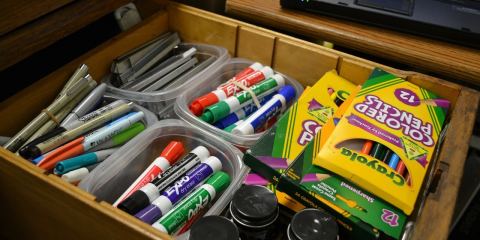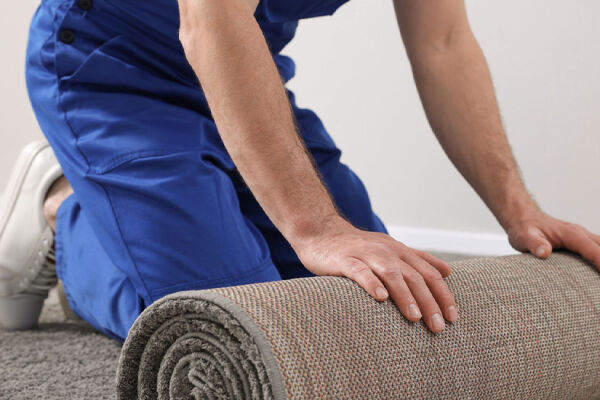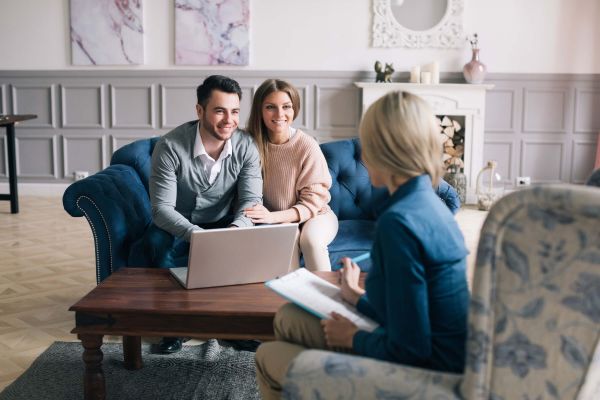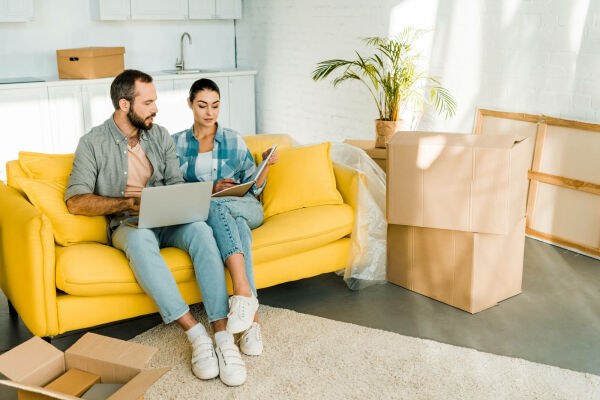When you’re busy balancing work, family, and your social life, organizing your home can easily take a backseat to the demands of your daily life. As our day-to-day responsibilities and commitments adjust to match our new reality, you may find yourself spending a lot more time at home—suddenly those cute tchotchkes and things you were sure you’d use someday look an awful lot like clutter.
Whether you’re a procrastinator with a penchant for putting off home tasks or a go-getter who’s already Marie Kondo’d your entire home, now is a great time to devote some attention to tidying your at-home oasis. But how exactly do you get organized when you can’t easily get to the store to acquire the home organizing tools you need to get everything in order?
You could order supplies online, but delays abound and non-medical shipments are being deprioritized by many companies. Don’t worry—if you’ve got gadgets and gizmos aplenty (we know you do), save your money and turn your focus to unused items you have laying around to get organized.
Keep reading for our advice on how to organize your home using items you already own.
Start by sorting through your stuff
With a little creativity, many items in your home can easily be repurposed to help you reorganize your space. From leftover packaging to underutilized goods, the pieces you need to clean up your clutter may already be lurking in your cupboards. But before you can MacGyver your own organization supplies, you should start by sorting through your belongings so you know exactly what you have, how much you have to store, and what supplies you can repurpose.
Make good use of these items and your extra time at home by cleaning up these belongings first:
Papers
Organizing your paperwork is a never-ending task—as soon as you clear away your bills and junk mail from one week, there’s a fresh pile ready to replace it.
If there are still some pieces of paperwork you get in the mail or you have a large stack of documents sitting in a shoebox, there’s nothing more satisfying than having all of your important information filed away in easy-to-find categories:
- Financial
- Government
- Taxes
- End-of-life documents
- Medical
- Employment
- Bills, receipts, proof-of-purchases, and warranties
- Agreements and leases
- Business
Creating a structure by categorizing your paperwork will make it easier to keep your perpetual paper pile under control.
Important paperwork is one thing you should try not to repurpose—it can contain personal information that should be disposed of safely and securely. Instead of using it as padding in boxes, shred anything you no longer need and dispose of the shredded paper in the appropriate manner for your municipality.
PRO TIP: It’s a good idea to eventually put your most important papers—passport, social security, financial paperwork, tax documents, etc—in a small fire- and waterproof safe to keep these items protected in the event of a house fire or flood. Until you can easily get to the store to pick one up, a ziploc bag or plastic bin will do in a pinch.
Clothing, footwear, and accessories
Whether you’re a clothing collector or style spartan, nothing is more satisfying than paring your wardrobe down to the must-haves and essentials and getting it all organized—reaching for a shirt, belt, or skirt and actually finding it is a wonderful feeling.
To get your closet cleaned, start by removing everything and discarding the items that no longer fit or feel right in your wardrobe.
PRO TIP: If you no longer wear something regularly but you still want to keep it for sentimental reasons, consider displaying it somewhere in your home or putting it into storage, protected from moths and mildew.
With your remaining belongings, assess what needs to be folded and placed in a drawer and what should be hung in the closet or wardrobe.
Discarded clothing can be donated or sold, but the fabric can also be repurposed into small pouches, produce bags, baskets, tote bags, bath mats, pillow covers. You can even cut it into strips and wrap it around ugly plastic hangers to create an eye-catching display-worthy hanger for plants and other household items.
Books, records, DVDs, other forms of physical media
If you aren’t completely converted to streaming services and ebooks at this point or you fancy yourself something of a collector, getting your physical media organized is a fun way to fill the time and even rediscover some of your old favorites.
You may not be able to repurpose these items as organization supplies, but you can cull your collection to make space for other (perhaps new?) items.
Kitchenware
Gadgets, containers, ingredients, and supplies in the kitchen can be frustrating to wrangle. Compile all of your belongings and get rid of any unnecessary extras. Then, with your items pared down to the essentials, you can organize them into categories based on what works best for you, such as:
- Most convenient location (as in, where you use them the most)
- Item type (wet vs. dry, etc)
- Grouped together by meal
Crafting supplies
Collecting crafting supplies and materials is a whole other hobby in addition to crafting in and of itself. Who isn’t guilty of picking up some extra yarn when you have skeins upon skeins waiting for you at home? Now’s the time to get your crafting items organized—it will allow you to take stock of what you have, give you some ideas for what projects you can do at home (including DIY organization supplies), and you can get rid of things you won’t use.
Cosmetics, hair, and hygiene products
While it’s easy to ignore, makeup and skincare products do have a shelf life. Toss that eyeshadow you’ve been saving for 10 years and pare down your collection to items you actually wear and use before you get down to organizing.
Common household items you can use to get organized
Most of getting organized is simply collecting like-items into smaller and smaller containers (think putting things into a divided box inside of a drawer). Instead of donning a face covering and trekking to the store, you can recreate many organizational tools using very common household items. While it may not look as polished as a store-bought product, these items are just as effective, and you can decorate them using paint, paper, and other materials you have in your home.
Make use of these common household items to get your belongings organized:
- Resealable plastic bags - If you don’t have file folders, resealable plastic bags are a good substitute for organizing your paperwork. Label the contents using a permanent marker and place them safely in a designated drawer or container.
- Accordion folders - If you happen to have more than one handy, you can use it to organize papers in any room—recipes in the kitchen, paperwork and documents in the office, photocopies of medical information in an emergency kit, etc.
- Boxes - Who doesn’t have a constant pile of boxes lying around these days? Used boxes can be easily cut to shape and repurposed to organize just about any item or space. Use them to divide up drawers, shelves, cupboards, or as hidden storage under furniture to keep things tidy. Dress up boxes that will be on display using paint, old fabric, and whatever crafting supplies you have lying around.
- Toilet paper rolls - Like cardboard boxes, toilet paper rolls can be cut up, taped and glued together to store myriad items. From jewelry and scarves, to crafting tools like pens and pencils, to office items like cables, these little tubes can be used to sort lots of knick knacks that can’t just be tossed in a drawer to float free.
- Plastic containers - Some plastic containers are sturdy enough to repurpose—disinfectant wipe containers are perfect for storing and dispensing old plastic bags, for example. However, many plastic containers from packaged goods are too flimsy to stand on their own, but they work well nestled into drawers or boxes to keep things divided. To that end, you can also use tupperware containers that have lost their lids to create DIY drawer organizers.
- Glass jars - Whether they were originally used for pickles, sauce, baby food, or jam, glass jars make an excellent and versatile storage option that you can see into to make it easier to find the things you need. Use them in any room of the house to organize loose change and other small items like nuts and bolts, bobby pins, cotton swabs, pens and markers, or even dry goods like lentils.
- Glass bottles - Empty beer bottles are perfect for storing bracelets and ponytail holders, or even rolls of tape.
- Metal tins - Decorative metal tins can be used to store small odds and ends, and they can add cute vintage flair to your space when displayed on open shelving.
- Tin cans - Old tin cans are perfect for organizing makeup brushes, craft supplies, writing utensils, and even houseplants. Give empty cans a thorough wash, make sure there are no sharp edges, then finish them off with a cute coat of paint. Get inspired with this tutorial.
- Aluminum cans - Because they are more durable than glass, aluminum cans are perfect for sorting crafting supplies, or for using in a workshop, garden shed, or garage to contain small items. To make them even more convenient, label the can with its contents.
- Magazine files - Plastic or cardboard magazine files can be used for a number things aside from holding magazines. They can easily be attached to the inside of cabinets and filled with plastic wrap, foil, parchment, and wax paper, and other kitchen supplies. Or, affix them to the wall above or beside your desk to better sort your papers, crafting materials, or office supplies.
- Paper towel holder - If you’ve made the switch to cloth or just happen to have an extra one laying around, use your paper towel holder to organize your assorted tapes (electrical, masking, washi), ribbons, strings or cables.
- Hanging shoe organizer - While they can obviously be used for shoes, these hanging organizers have loads of potential. They can be hung in the bathroom to store beauty tools and products, on the wall in the front hallway to organize mittens, hats, and scarves, in closets to corral cleaning supplies, in sheds and garages to organize gardening equipment and tools, or in closets to sort belts and other accessories. They’re also perfect for storing toys.
Wrapping Up
While you may not feel up to undertaking a massive project with so much going on in the world, taking care of some mindless tidying using items you already have while you catch up on your favorite podcasts or stream a new show may help you feel more relaxed in your space in the long run.
Get organized!
Control your clutter with our organization guides.




